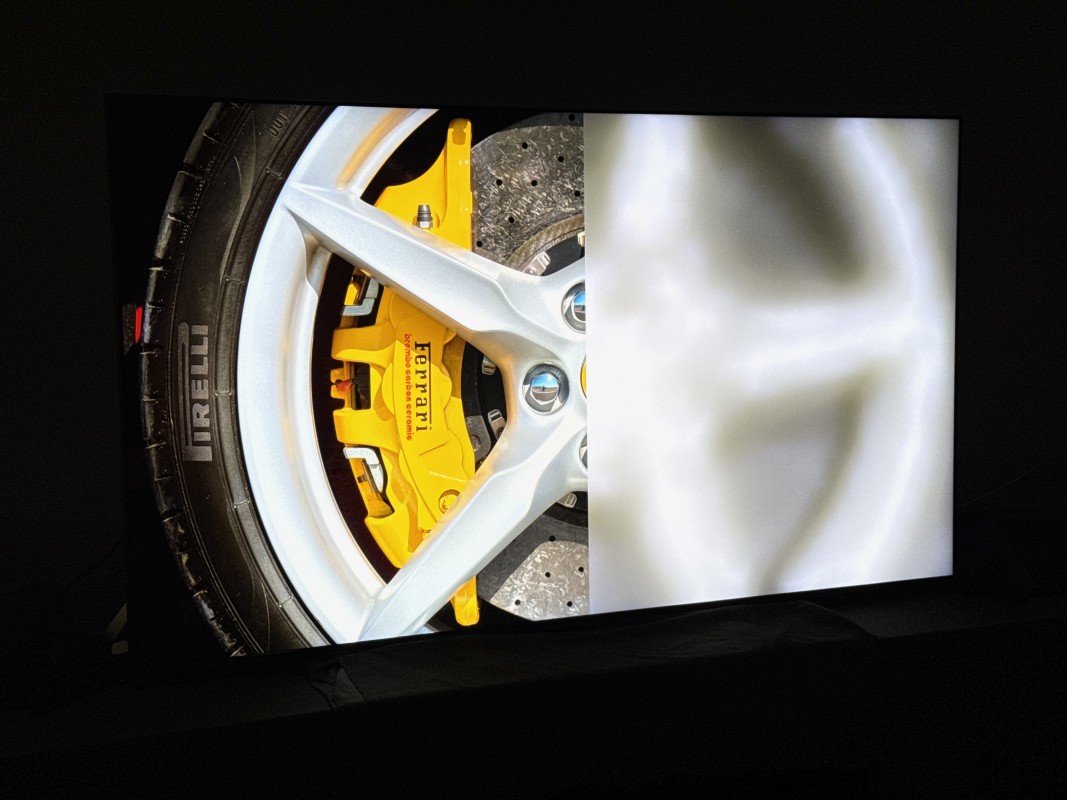Here’s what Sony's Mini LED prototype means for the future of TVs
TheStreet aims to feature only the best products and services. If you buy something via one of our links, we may earn a commission.
Sony’s Bravia lineup of TVs is known for offering vibrant pops of color and stark contrast points that create an immersive visual experience. It can make watching your favorite team, a rerun of Star Wars, or even some basic cable even more engaging to watch. It’s not a one-size-fits-all lineup of televisions, though.
OLED, Quantum Dot OLED, Mini LEDs, and LED TVs make up the Sony Bravia family, while OLED and Mini LED have always been the most visually exciting with the best pictures. And the latter is where the company sees even more promise in the coming years.
While on a recent trip with Sony to the Home Entertainment division headquarters in Tokyo, I saw a Mini LED prototype poised to give the TV even more control over creating images, shifting the focus to the best quality content. In fact, Sony split a TV in half—removing the top filter layers— to let us see the light emitted from the individual backlighting, aka Mini LEDs.
Jacob Krol/TheStreet
Essentially, it’s Sony’s prototype Mini LED TV backlight that a new LED Driver heralds—it’s ultra tiny, smaller than a seed—which controls hundreds of Mini LEDs. The light emitted passes through filters and other layers to create an image. Excuse the pun, but the lightbulb is that Sony’s managed to shrink the controller size down further and better control each Mini LED.
And that’s a difference from what is currently in Sony’s Mini LED TV offerings and with competing TV brands. The individual mini LEDs are smaller, and the LED Driver controls the groups and singular LEDs. With this new LED Driver (aka a controller), the TV can better control a group of the Mini LEDs and then individually to create a scene more accurately.
The amount of power being sent to each mini LED can vary, meaning theoretically, one could be at 75% brightness, and another could be at 20%, giving it greater control when lighting a scene. This could prove especially beneficial in reducing blooming and light leakage from scenes with bright and dark spots near each other.
In the demos that I saw, dubbed “backlighting” demos, it’s less of an amorphous blob of light and more of a defined light area. So if it’s a bright, red sports car on the street at night, these LEDs would better produce a more luminescent red light in that specific region. Or even during the day, you can see the gradation from a vibrant red sports card to a slightly less bright landscape with shadows being cast on the road.
Jacob Krol/TheStreet
While it’s not the same as an OLED TV, which can individually cause a pixel to illuminate or un-illuminate, these future Mini LED TV offerings from Sony give it better control to create compelling visuals. That, paired with the Bravia XR processor, should make this an incredibly visually impressive TV. With more control over the Mini LEDs, down to each one, and the ability to pack more of them into a given TV, you can get brighter, more vivid images that are accurately depicted. We can expect improvements to overall brightness, contrast, color, and more, as well as a decrease in blooming or areas of light leakage.
Considering how Sony’s current lineup of Mini LED TVs—the X93L and X95L—perform very well, and ultimately create compelling visuals, this is a fascinating development and represents a big step forward for this TV type. It certainly makes Sony the brand to watch and sets the stage for the 2024 Mini LED offerings to be some of the best TVs on the market that could go as far as rivaling the Quantum Dot OLEDs—currently the A95L.
Much of this remains to be seen, but for now, it’s clear Sony’s hardware teams have been hard at work and got a breakthrough with smaller Mini LEDs and drivers. Let’s just see how it all comes together.
Source link




